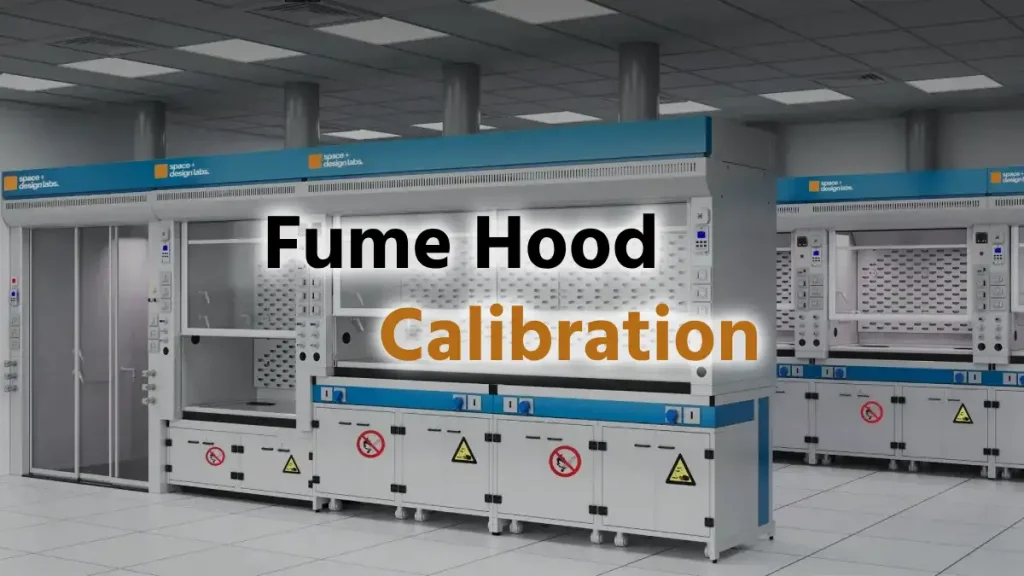Operation with radioactive materials requires complete safety protocols along with specialized equipment for protection. Any radiochemistry lab or nuclear medicine facility relies on the radioactive fume hood as an engineering masterpiece which combines radiation protection with essential scientific operations. Standard chemical fume hoods differ from these specialized containment systems because they include unique features that handle radioactive substance hazards. The guide thoroughly explains all vital design aspects together with safety measures and regulations needed to turn radiological fume hoods into vital equipment for nuclear science fields and medical applications and industrial purposes.
Table of Contents
The Fundamentals of Radioactive Fume Hood
Radioactive fume hoods (radiological safety cabinets), are essentially the first line of defence against both contamination and radiation for radioactive-related personnel. These unique ventilation apparatuses generate barriers in which the technicians can operate to handle radioactive items without allowing any radioactive particles to be released into the lab atmosphere, so they are designed to prevent contamination but facilitate radioactive manipulation.
Radio fumehood (as opposed to standard fume hoods) have to protect from 3 different types of radiation:
- Alpha radiation: [very short-range particles] incapable of penetration through skin but utterly deadly if ingested or inhaled.
- Beta radiation: Mid-range particles; can penetrate skin but is easily shielded.
- Gamma radiation: high-energy waves that require massive shielding of say leaded concrete
The construction of a radioactive fume hood must ideally preserve the aerodynamics needed to prevent contamination while taking into account these all radiation types.
Essential Design Features for Radioactive Material Handling
Seamless Interior Construction
Radiological fume hoods are the bowls of radioactive particles, with smooth non porous interiors made from materials such as stainless steel or a specially coated material so there are no creases and seams where particles become trapped. This clean construction lends easy-to-use for decontamination and also reduces contamination risks.
Approximately 78% of laboratory radiation incidents are attributed to the NRC, improper containment or decontamination procedures contribute to contamination in the vast majority of the 78%. The flat design virtually eliminates this risk.
Better Filtration Circuits
The Standard HEPA filters will take 99.97% of the 0.3 microns particle but for radionuclide fume hoods generally using higher filtration in general are:
ULPA filters: Capturing 99.999% of particles 0.12 microns or larger
Activated carbon filters: Binding radioactive gases such as Iodine-131
Combined multiple filtration stage: Cominig several kinds of filters for total protection
Using the latest systems guarantees that no radionuclide particles are allowed to leave the laboratory environment or exit into the external ventilation system.
Lead Shielding Integration
Lead shielding for gamma-emitting radionuclides. Modern radioactive fume hoods include:
Lead lined walls- a wide range from ¼” to ½” thick
Leaded glass : Viewing windows of the same protection level
Integrated shielding: encasement of waste storage compartments
According to laboratory safety studies, It is integrated shielding that reduces external radiation exposure from 50 to as little as 5% [Mushin et al 2001].
Specialized Airflow Management
Specialized airflow patterns inside radioactive fume hoods produce both negative pressure along with specific air movement patterns that:
- Create air velocities of 100-125 linear feet per minute at the face opening
- The airflow design should minimize all disturbances that might affect radioactive particle movement.
- The system should use laminar flow techniques to produce consistent directional airflow.
The system tracks airflow patterns and reports any failure indications to users through an alarm system.
Dedicated Waste Management Systems
The radiological hood contains features which combine radioactive waste handling systems that conventional hoods lack.
- Segregated containment areas for different waste types
- Built-in lead-lined storage for decay-in-place protocols
- Connections to specialized drainage systems for liquid radioactive waste
By incorporating these specific features the laboratory needs fewer activities to move radioactive waste so that contamination risks stay minimal.
Regulatory Compliance and Safety Standards
Operators who handle radioactive substances need to fulfill multiple complex regulatory conditions. Radiological fume hoods have to pass requirements from multiple sources which include:
- NRC regulations: Including 10 CFR Part 20 for radiation protection standards
- ANSI/AIHA Z9.5: Laboratory ventilation standards
- DOE standards: Specific requirements for Department of Energy facilities
- International safety standards from the International Atomic Energy Agency make up an essential part of these guidelines.
The requirements for compliance receive continuous monitoring via certification tests performed at intervals of 6-12 months. The facilities must store certification records that can be checked by regulatory agencies at any time.
Best Practices for Radioactive Fume Hood Operation
Implementing these operational protocols maximizes safety:
- Conduct pre-use checks of airflow indicators and radiation detection equipment
- Position radiation shields optimally before beginning work
- Keep all materials at least 6 inches inside the hood face
- Minimize arm movements that could disrupt airflow patterns
- Regularly monitor work surfaces for contamination during procedures
- Follow specific protocols for cleaning spills based on isotope characteristics
Laboratory managers report that consistent adherence to these practices reduces radiation exposure by approximately 40% compared to inconsistent application.
FAQs About Radioactive Fume Hoods
How do radioactive fume hoods differ from biological safety cabinets?
While both provide containment, biological safety cabinets primarily protect samples from contamination and users from biological agents. Radioactive fume hoods focus on containing radioactive materials and shielding users from radiation exposure. Unlike biosafety cabinets, radiological hoods rarely recirculate air and include additional radiation shielding materials.
What training is required for radioactive fume hood operators?
Personnel working with radioactive fume hoods typically require:
-Radiation safety training
-Hood-specific operational certification
-Emergency response procedure training
-Regular refresher courses (usually annually)
Studies show that facilities implementing comprehensive training programs experience 63% fewer radiological incidents than those with minimal training requirements.
How are radioactive fume hoods decommissioned?
Decommissioning involves a multi-step process:
1. Detailed contamination survey conducted by radiation safety officers
2. Decontamination procedures based on survey results
3. Verification testing to confirm decontamination effectiveness
4. Removal of filters and potentially contaminated components as radioactive waste
5. Final clearance survey before releasing for disposal or repurposing
This process ensures no radioactive contamination leaves the controlled environment.
Conclusion
Radioactive fume hoods serve essential functions in facilities that work with radioisotopes due to their unique engineering and enhanced security elements. Both personnel protection and radioactive material containment become the primary function of each component built into radioactive fume hoods.Medical and industrial progress using radioisotopes demands that people stay updated regarding the most recent radiological containment technology developments. The understanding of fundamental design elements and safety guidelines in this guide aids laboratory managers and radiation safety officers to make proper choices for their essential safety systems selection and installation and maintenance procedures.
Advanced engineering technology gives significant protection against radioactive materials but proper training and strict adherence to safety rules equally ensure environmental safety during work.

I’m Arun Kumar Pathak, a professional with 18 years of experience in Quality and Operations management. I hold M.Com, M.A., and PGDIBO degrees. After working with companies like Reliance, GATI, and Vectus, I transitioned to the laboratory field 4 years ago. Currently, I’m the Operations Manager at Space Plus Design Labs Pvt. Ltd., where I collaborate with design and manufacturing teams to manage the production of laboratory furniture, Fume Hoods, and scientific equipment. Also I love to share my experience to create content, that’s way here sharing blog articles.



